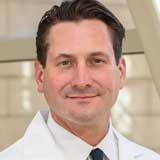Director: Christopher G. Roth, MD
Tuition: $1,000/day, $4,800 per week, $3,600 for each additional week up to 1 month, $2,000 for each additional week after 1 month
Approximate number of cases per day: 60
The computed body tomography visiting fellowship offers close contact with dedicated CT radiologists. The majority of this fellowship consists of participation in the reading of body CT images. Fellows may work with technologists on workstations and multi slice scanners (with prior arrangement) and also participate in weekly conferences/lectures.
The objective of this program is to support development of an understanding of the computed tomographic sectional diagnosis of the mediastinum, chest, abdominal organs, retroperitoneum and pelvic structures. The visiting fellow will also have the opportunity to develop confidence in the selection of appropriate computed tomographic protocols for specific clinical problems. This fellowship is offered in one-week blocks. Subspecialty concentrations available include chest, abdominal and vascular. The visiting fellowship experience can be tailored to individual needs. Equipment: Multidetector CTs from several manufacturers with 256, 64 and 16 detectors are used daily in the division. CT fluoroscopy is also used for interventions. Workstations from multiple manufacturers as well as standalone workstations are available for review.
Among the goals of the CT visiting fellowship is to rapidly gain exposure to a high volume of a wide breadth of case material and address practice gaps. The rich variety of cases spanning trauma, oncologic and angiographic indications, CT colonography, renal and liver donor evaluation and others and including the application of dual-energy CT accomplishes this goal. Regarding specific practice gaps, a teaching case system and ability to search for specific topics, as well as a digital lecture library featuring lectures given by body CT faculty (among others), provide the means to gain exposure to specific topics or conditions to help fill these gaps. Faculty members are available to provide guidance and direction in this regard as needed.
This fellowship is designed to meet the following practice gap: physicians in practice have a lack of exposure to the range of pathologies and techniques seen at Thomas Jefferson University Hospital.
Learning Objectives
- Identify proper CT protocols.
- Explain how to interpret a wide range of CT cases.
- Demonstrate a competency in the analysis of CT scans.


